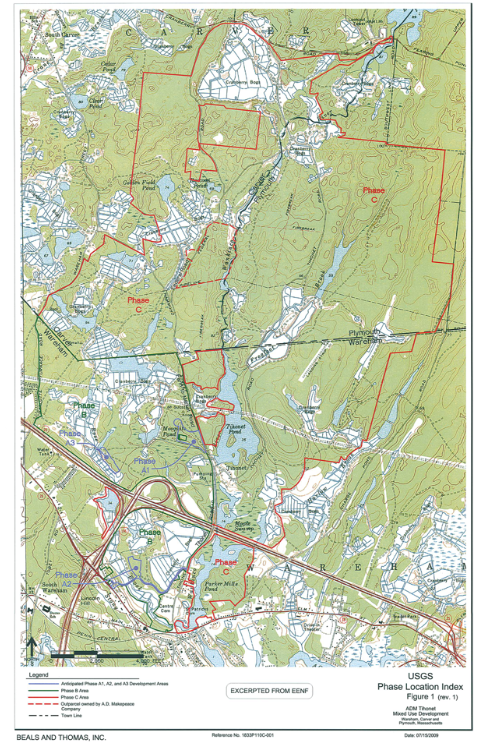Instead of smart growth and conservation as promised in 2008, Makepeace is doing industrial sand mining and large solar
Where’s the land? And where’s the sand?
Our state “Massachusetts Environmental Policy Act” (MEPA) requires developers of big projects minimize and mitigate “Damage to the Environment”.
A.D. Makepeace Co. of Wareham MA is the state’s largest landowner. It owns about 12,000 acres in Southeastern Mass, primarily Plymouth, Carver and Wareham. Historically, Makepeace has been in the business of growing cranberries on its land. In the 2000s, the cranberry industry started a long economic decline. Makepeace announced it would develop about 6,500 acres of the land.
Makepeace called this its “Tihonet Mixed Use Development” or “TMUD” project.
In 2007, Makepeace negotiated a “Special Review Procedure” for the TMUD project with the state MEPA office. It negotiated an environmental review “light” — state officials let Makepeace off the hook in exchange for promises to I put land in conservation, develop the rest of the land as a model of “smart growth and open space” and include the public in the process with quarterly meetings. The plan was for a 20 to 30 year “build out” of the 6,500 acres.
Makepeace’s current land holdings and the 6,500 TMUD area that was subject to the MEPA review is shown on the map below outlined in red.

Today in 2023, the TMUD area is a blighted industrial landscape of A.D. Makepeace’s sand and gravel mining operations and industrial ground mounted solar projects. This is a bait and switch.
Makepeace uses its land to supply itsRead Custom Soils operations based in Carver, in the TMUD area. For over 12 years, Makepeace has been strip mining the land, leveling hills and extracting sand and gravel to supply read. This is not “smart growth” and “open space.”
As part of the TMUD deal and as part of all the permits it got from the state’s Natural Heritage and Endangered Species Program (NHESP) to kill listed species of plants and animals and destroy their habitat, Makepeace was supposed to put significant areas of land into conservation. Instead of donating the land, Makepeace sold some of to the state, meaning taxpayer money was used to help Makepeace meet its obligations for mitigating damage to the environment under MEPA. Makepeace may also be “double-dipping” and using the same conservation acres for different projects. These include Makepeace’s such legal obligation to donate 300 acres to Plymouth in exchange for a permit from the Zoning Board of Appeals to strip mine 7.2 million cubic yards on 200 acres next to Frogfoot Brook and also for its Red Brook development in Plymouth and projects in Carver and Wareham. The state and municipal officials will not give a straight answer on whether Makepeace has met all its obligations to the public.
